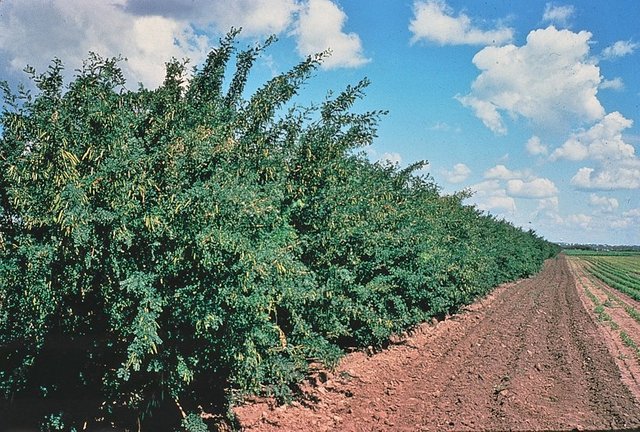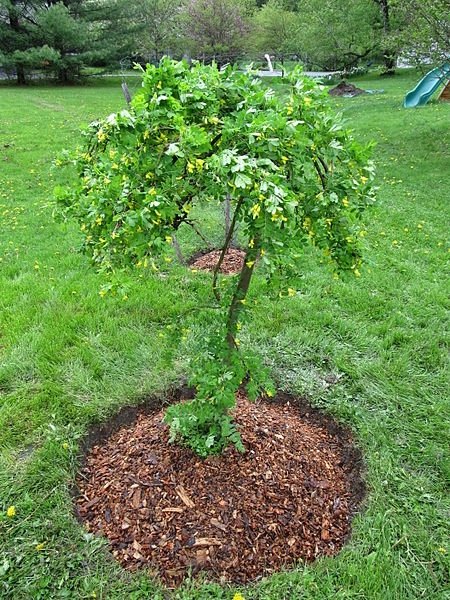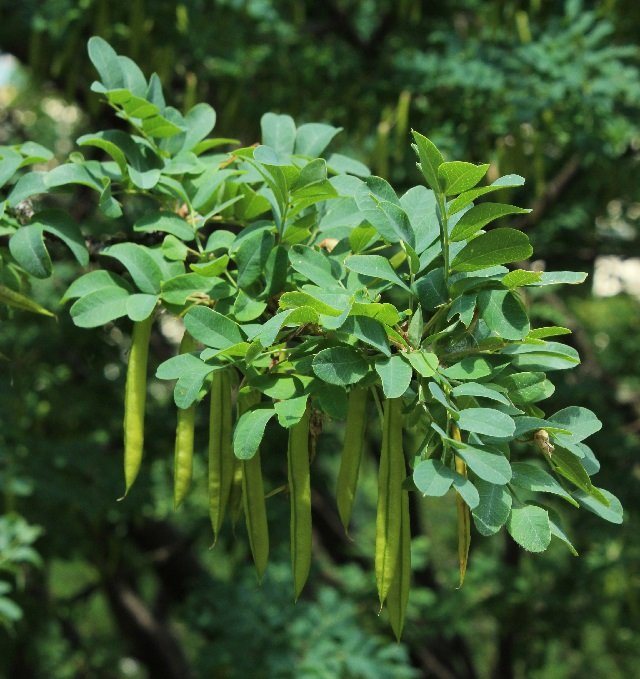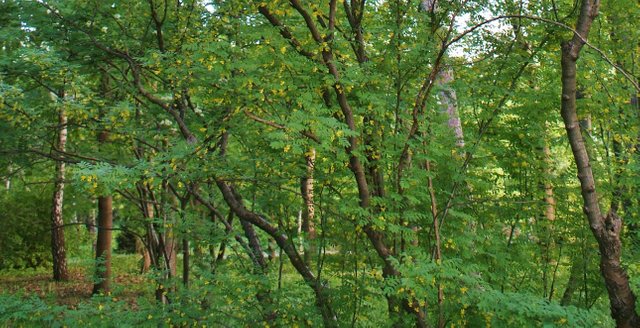Cold Climate Permaculture Plants: Caragana
 Source
SourceDescription
The common caragana (Caragana arborescens) also known as Siberian pea-tree and Siberian peashrub, is a medium to large shrub with compound leaves and bright yellow flowers. Its native range encompasses a large part of Northern and Eastern Asia. It was originally brought to North America by Asian immigrants who used it as a food source.

Caragana is extensively used on the prairies as a shelterbelt tree due to its moderate to fast growth rate and drought tolerance. Often used as a hedge shrub, the caragana has the ability to tolerate close planting and rapidly regrow after trimming. Much like the last permaculture plant I highlighted, the sea buckthorn, it is considered invasive in some areas and there are active programs to control or eliminate it.
It should be noted that the Caragana family of plants has undergone a lot of breeding and there are many plants in the caragana genus that share similar but slightly different attributes. If there is something you don't like about about the common caragana there may be a variety that fits your needs better. Some are different species like the pygmy pea shrub (Caragana pygmeae) while others like the weeping caragana "Pendula" is a named variety of common caragana that is usually used as a small decorative tree.
Uses
While caragana is not a particularly sexy plant, it is quite a work horse and has many useful attributes. Having a dense root system, and high pollution and drought tolerance means that it is a perfect plant for erosion control and reclamation. Being a nitrogen fixer also makes it a great support species because of its ability to enrich the soil. In windy dry areas, Caragana is often planted as a pioneer species and once established other more sensitive trees and shrubs can be nursed along.
It can also be used as a fuel wood plant due to it's ability to regrow rapidly after trimming. Coppicing and pollarding may be a preferable alternative to selective pruning or trimming for this purpose.

Due to its origins as a food plant the caragana can be used as an emergency food source. After flowering, caraganas produce a large number of small pea like pods that can be eaten whole when young and produce edible seeds. These can be harvested and used fresh or dried and then rehydrated like a bean. It is recommended that the seeds and pods be cooked. The main drawback, preventing caragana from being a primary food source, is the high level of effort and tediousness needed to harvest a significant amount of seeds.
As an animal fodder crop, caragana may have much greater potential. There are claims that Siberian peasants were able to keep their chickens alive though second world war winters feeding them caragana seeds, which are as high as 36% protein. The branches and leaves also make an excellent browse for animals like sheep and goats.

Other uses of caragana include habitat for song birds and predatory insects like lacewings. They are a great flower and nectar source for bees and butterflies. They have been used to produce cordage due to their stringy bark and it is reported that there is a way to use them to produce a blue dye. All in all, caraganas are a pretty bad ass plant!
Growing Conditions, Propagation, and Maintenance
Common caragana is hardy in USDA zones 2-7 and needs cold winters to thrive. It prefers full sun but will also grow in partial shade, although perhaps not at the same rate. Wetter soils are tolerated as long as they are well drained and not saturated. Caragana will not survive on sites that are consistently flooding. Once established caragana is very drought tolerant.
 Source
SourceCaragana does not sucker but has a habit or spreading aggressively due to seed drop. It is generally propagated by seeds but can also be layered or rooted from cuttings.
Very little maintenance or care is needed, although this long lived shrub may benefit from trimming or pruning which can encourage rapid new growth. Coppicing may also be used to reinvigorate a stagnant plant. Of course, you could always just let browsing livestock do the majority of this work for you!
Sources
http://www1.agric.gov.ab.ca/$department/deptdocs.nsf/all/agdex986
https://en.wikipedia.org/wiki/Caragana_arborescens
http://tcpermaculture.com/site/2013/05/13/permaculture-plants-pea-trees/
https://www.hort.purdue.edu/newcrop/duke_energy/Caragana_arborescens.html
Wow, those look like sweet peas and green beans on a tree. My sister won't like to eat them. But you mentioned only to eat the seeds in the pod so maybe she'll eat it. But she doesn't like green peas too. Is the seed green?
The bee almost look like a part of the flower!
If i remember the seeds start off green and then turn a brownish color as they mature. They don't taste exactly like peas though.
Yeah, that picture with the bee I took myself. He is really getting in there!
thanks for checking out my post and upvoting my post and following me if you were here i 'd let you drive me in my gocart
but i like Canada bee-cause it snows more there! we hardly have any snow here this winter
No problem, that go-cart sounds like fun!
The snow is nice but it gets really, really cold here....
Double Post
I think I have seen this similar type of tree in the Philippines. In the Philippines it's called ipil-ipil same bean pods green seeds then turns brown. I don't remember eating it though.
It has high protein content too but has a certain acid so I don't think I'll let my cows eat it when we get to that point in our farm life :D
There are many trees that have compound leaves and bean pods. I think most of them are nitrogen fixing but not all of them are edible.
Nice plants with info. 👍
Another great post. I've tried this plant several times, but my geese and the local deer keep eating them before they get established. I'll be trying again this year, but will run a hot wire around them until they're more mature. I will say, the bees go crazy for this one.
I have had similar issues with Saskatoons. The damn deer won't leave em alone. They are stunting their growth!
This isn't exactly permaculture, but if you have a good stand of Caragana and can find a wood chipper somewhere, it makes the best garden mulch in the world. Earthworms love it and it rots fast and contains its own nitrogen. I use wood chips between my raised beds and then incorporate them into the soil the next year in the fall. I never have to use other fertilizer (though I often use compost tea to water). Best gardens I've ever had since I started doing this.
That sounds like permaculture to me! There is a small group of permaculture puritans that might not think so but they rarely do much actual work or innovation.
Great tip, thanks for sharing!
Nice post never heard of caragana before but will be looking into it more to add some to our permaculture farm thanks for the info.
You're welcome! ☺️
Great post, keep it up.
Followed :)
Thanks!